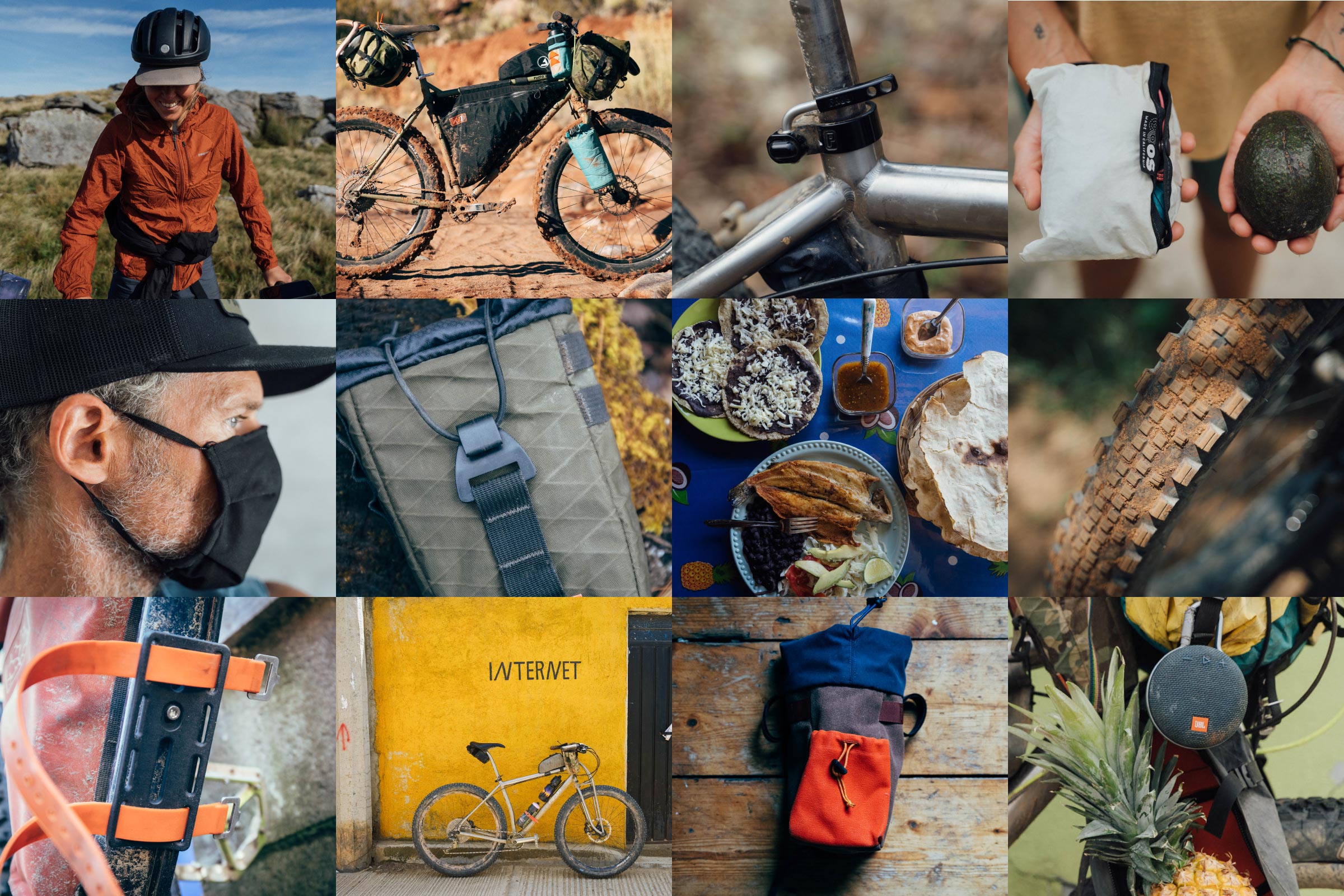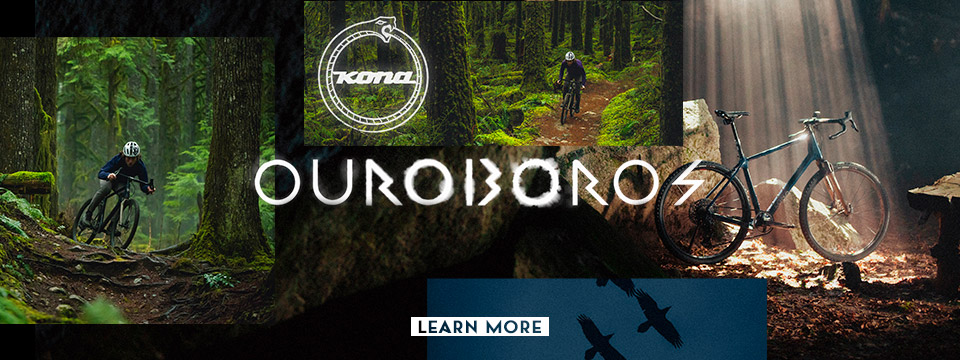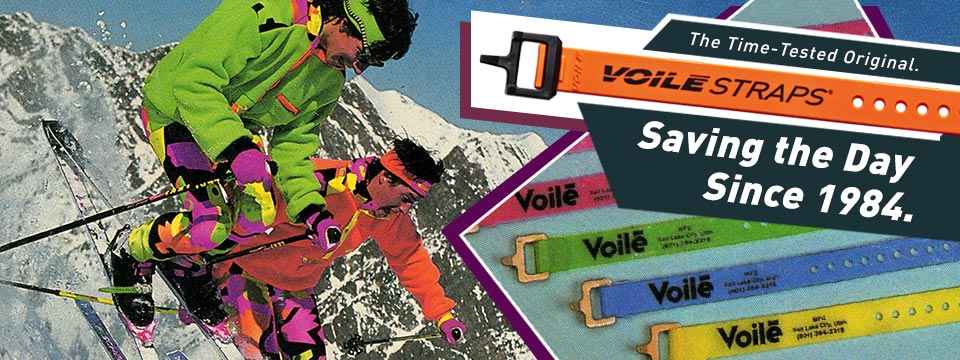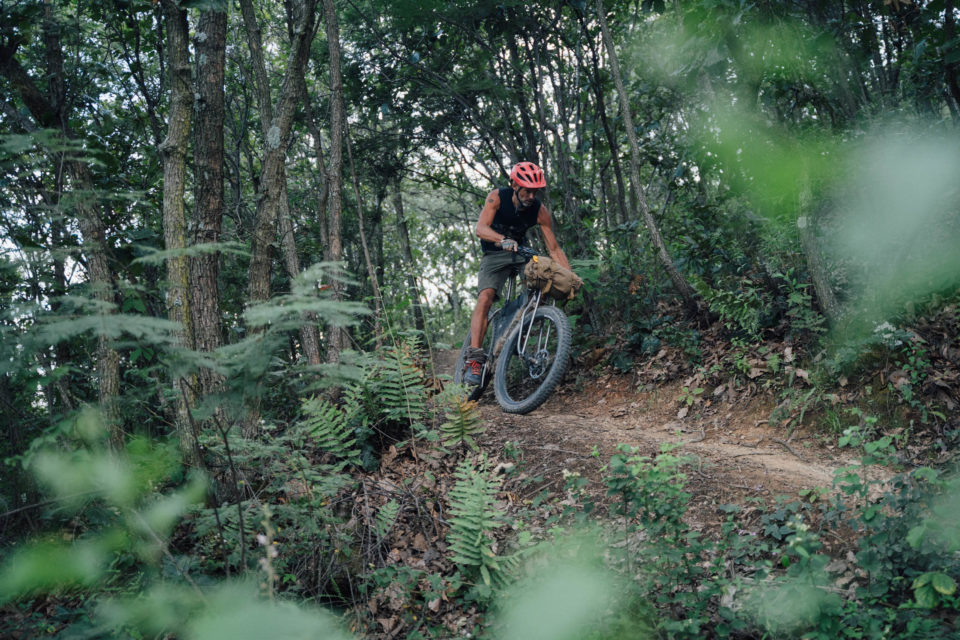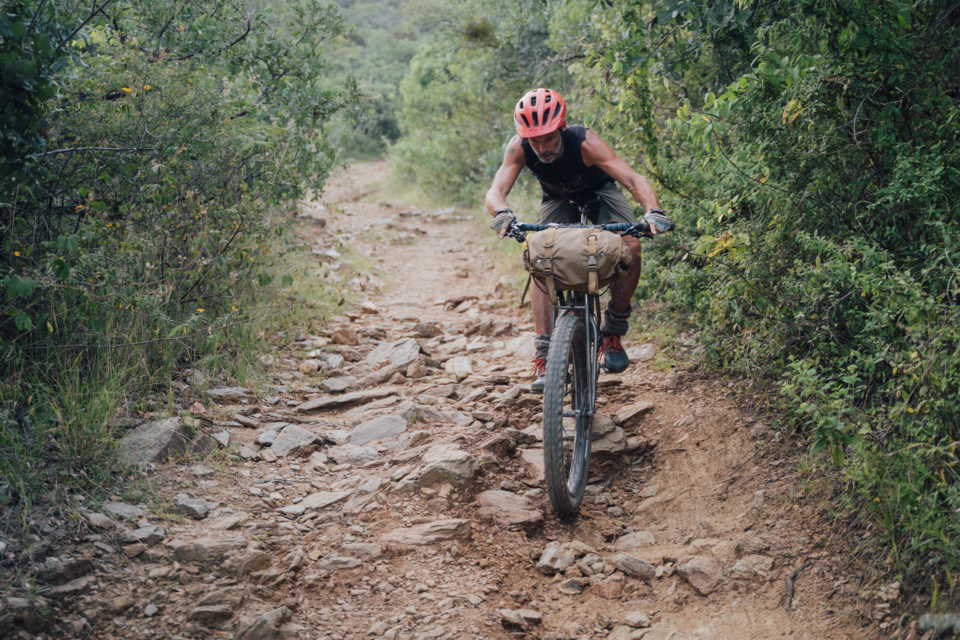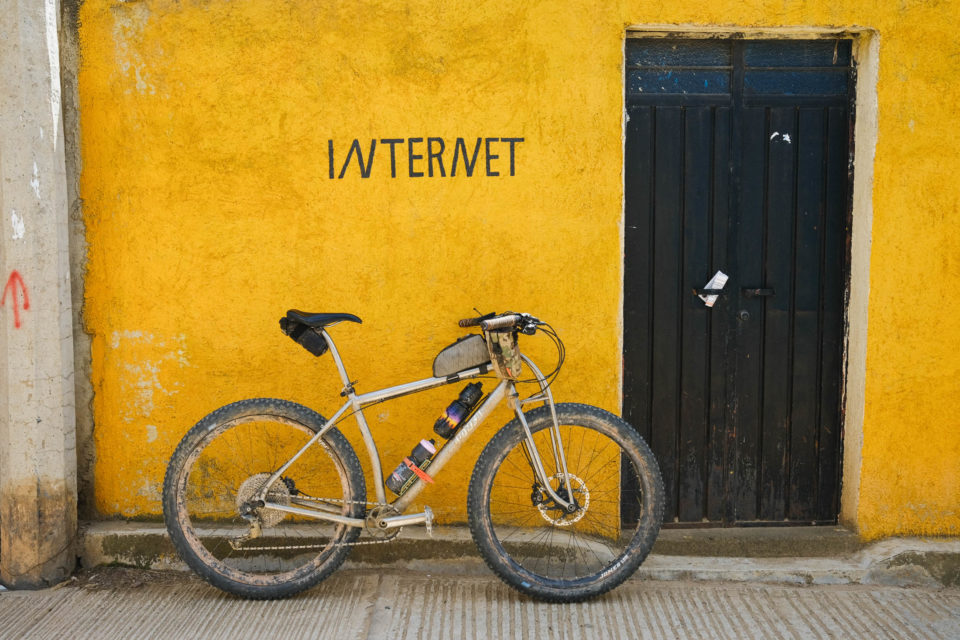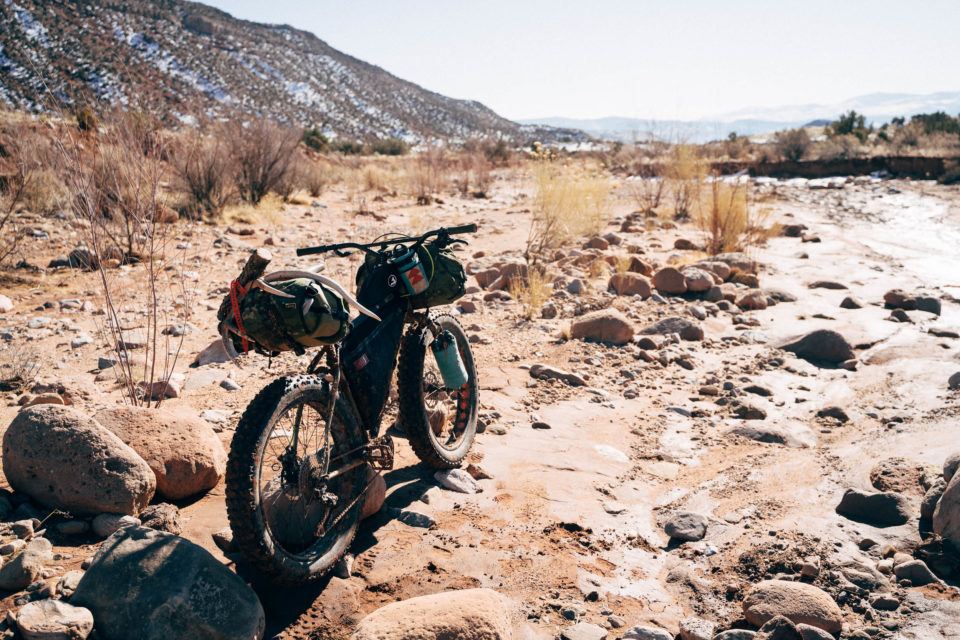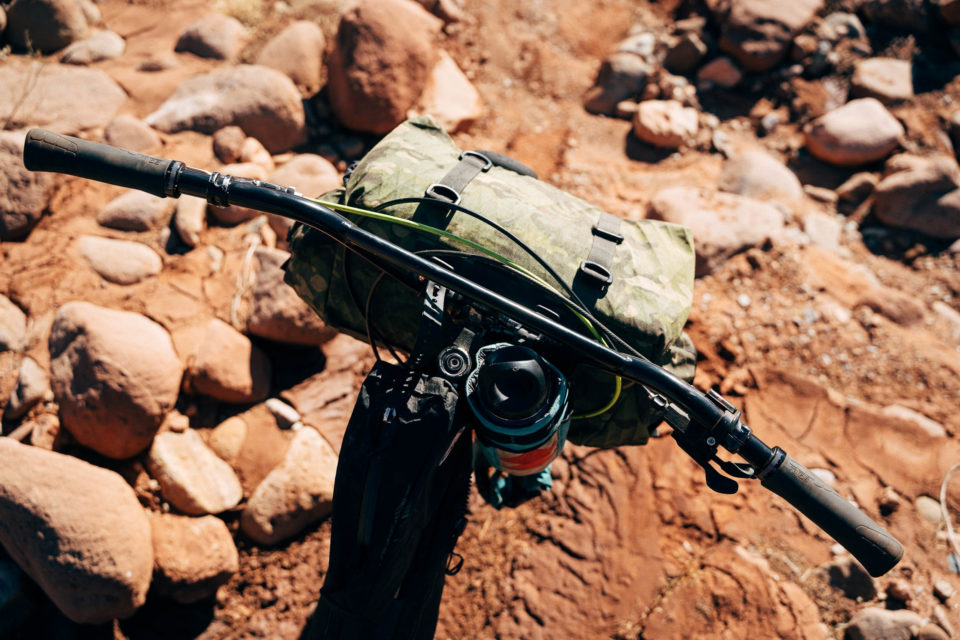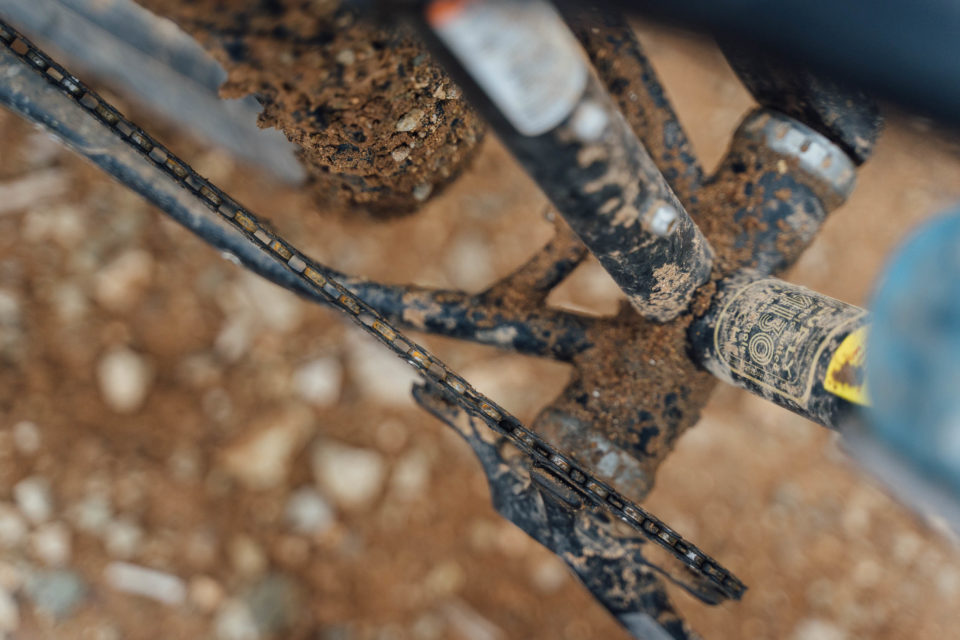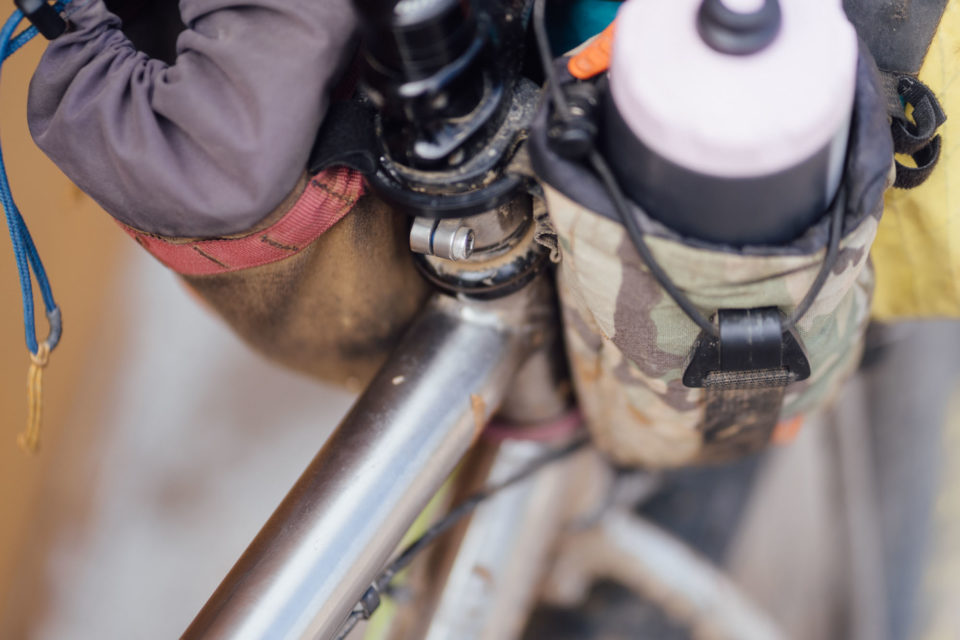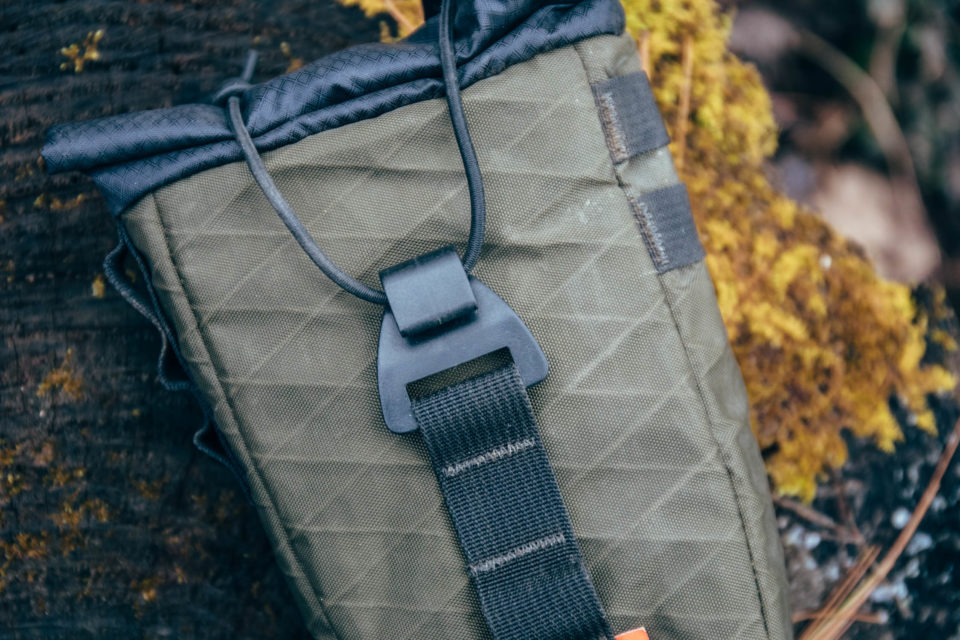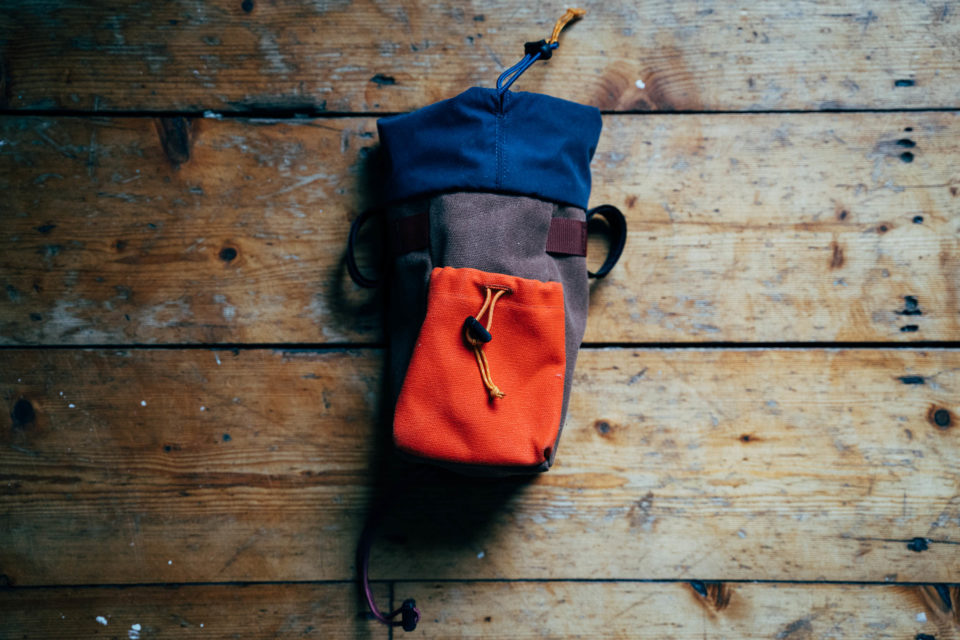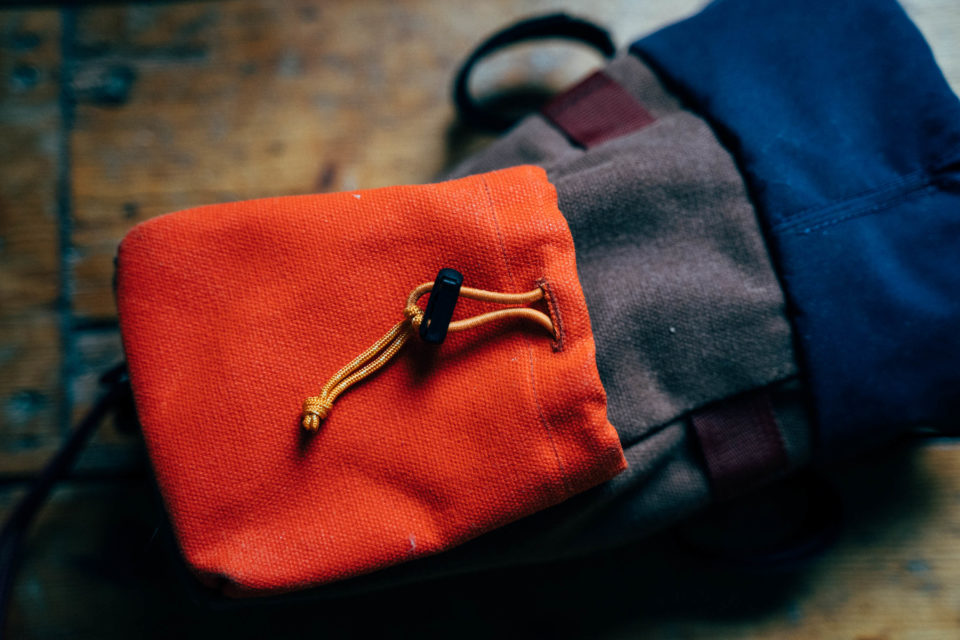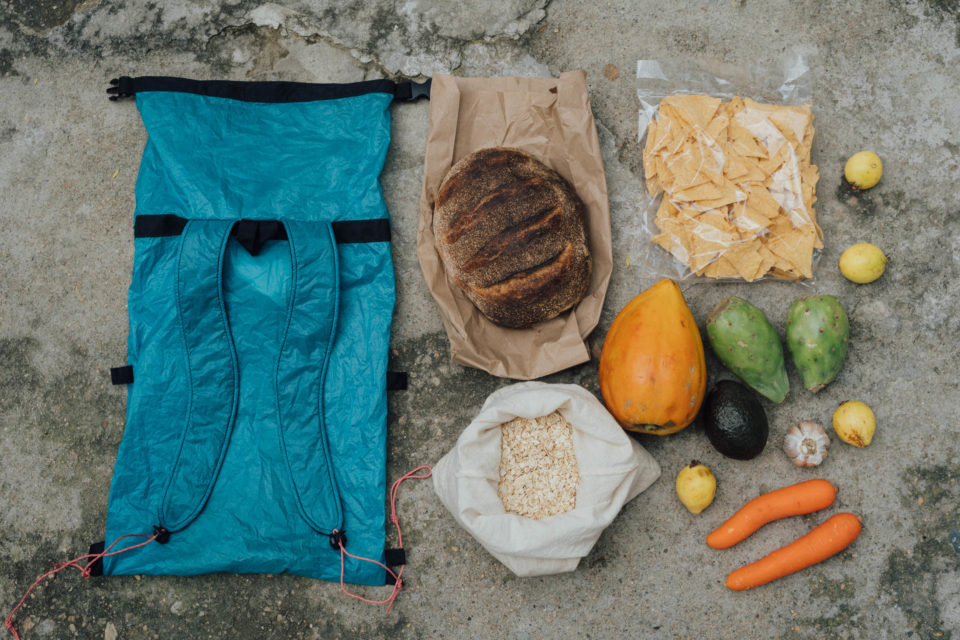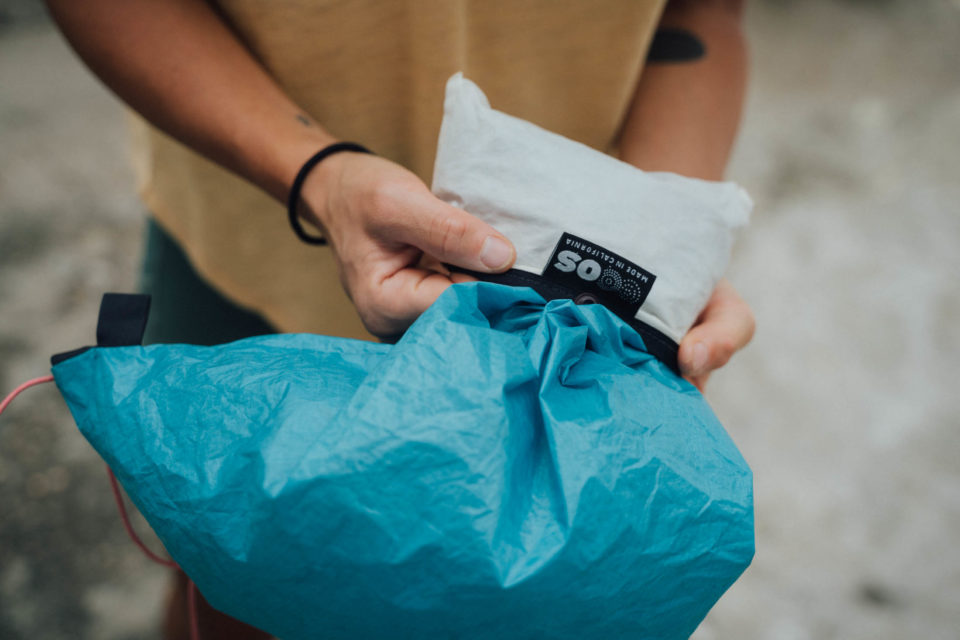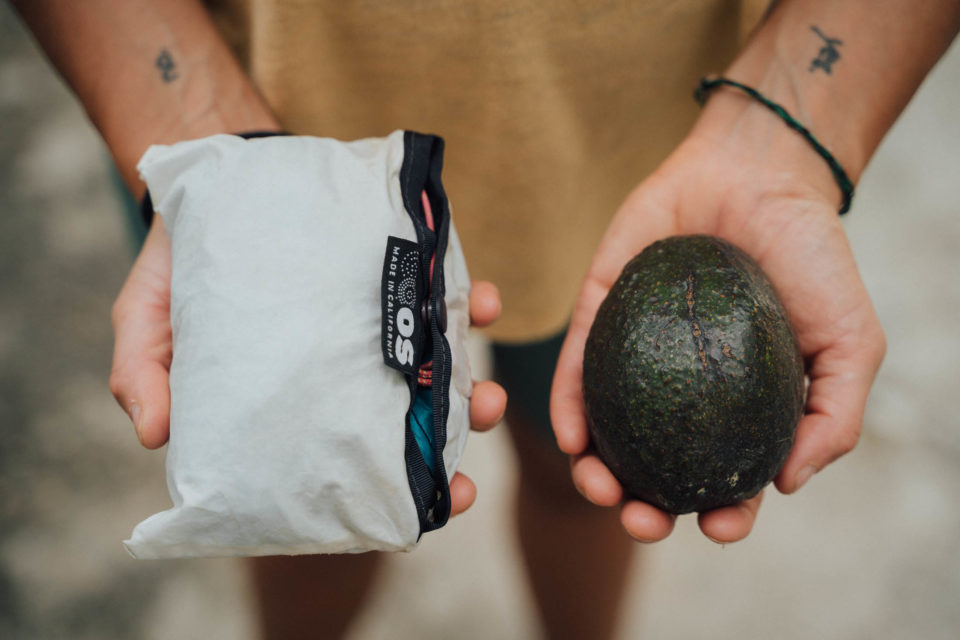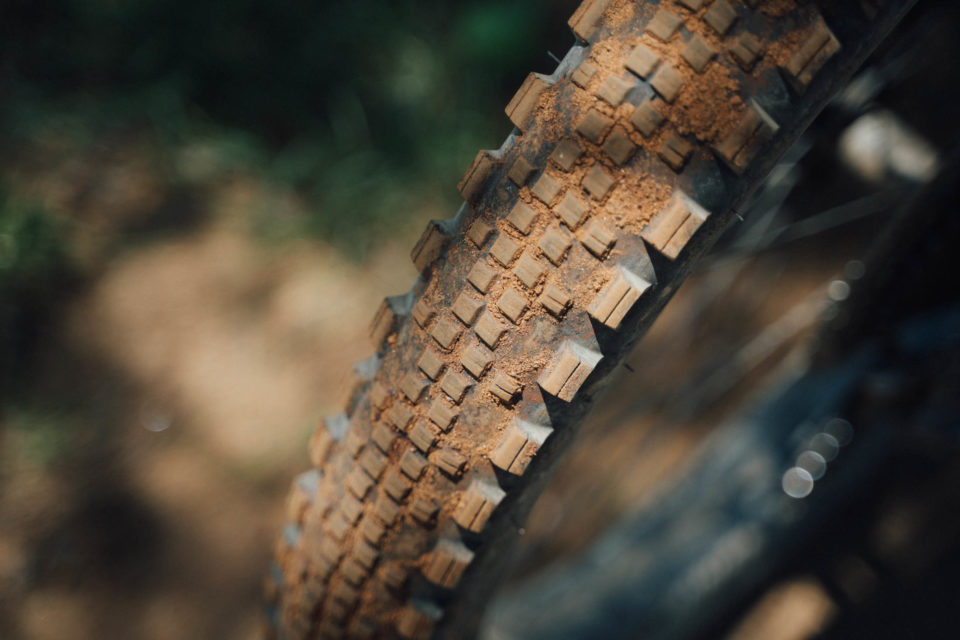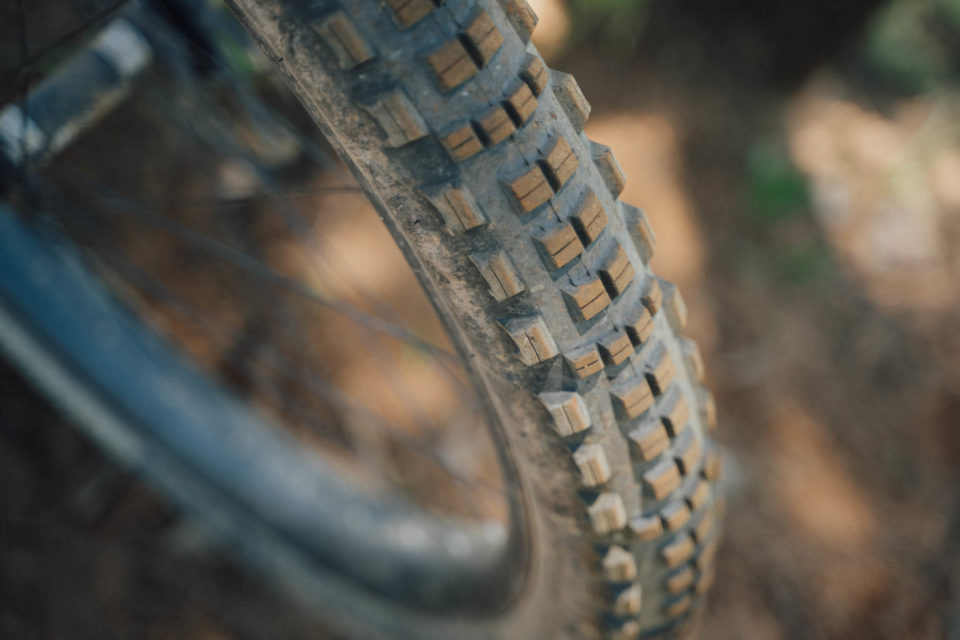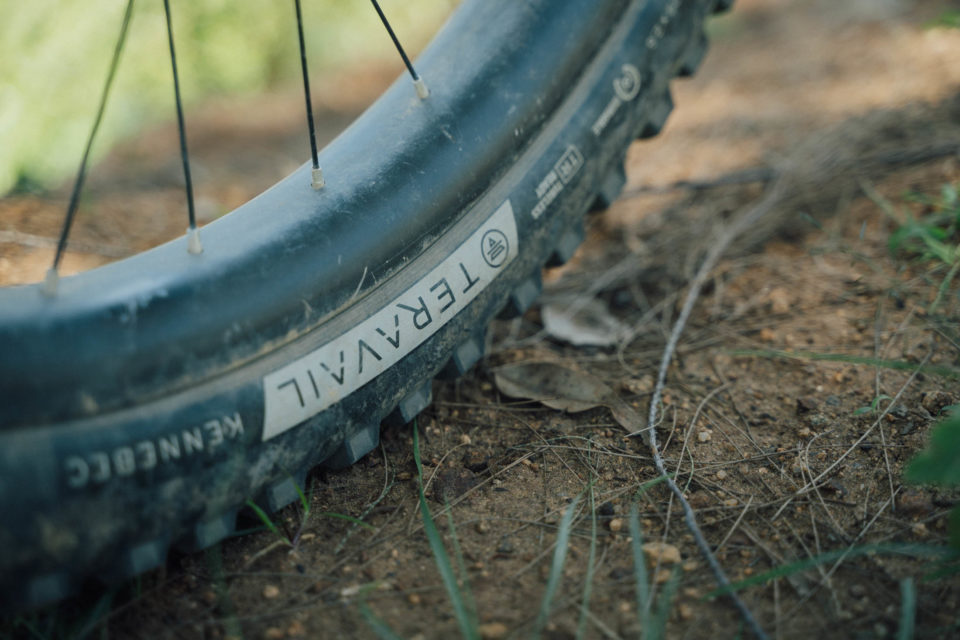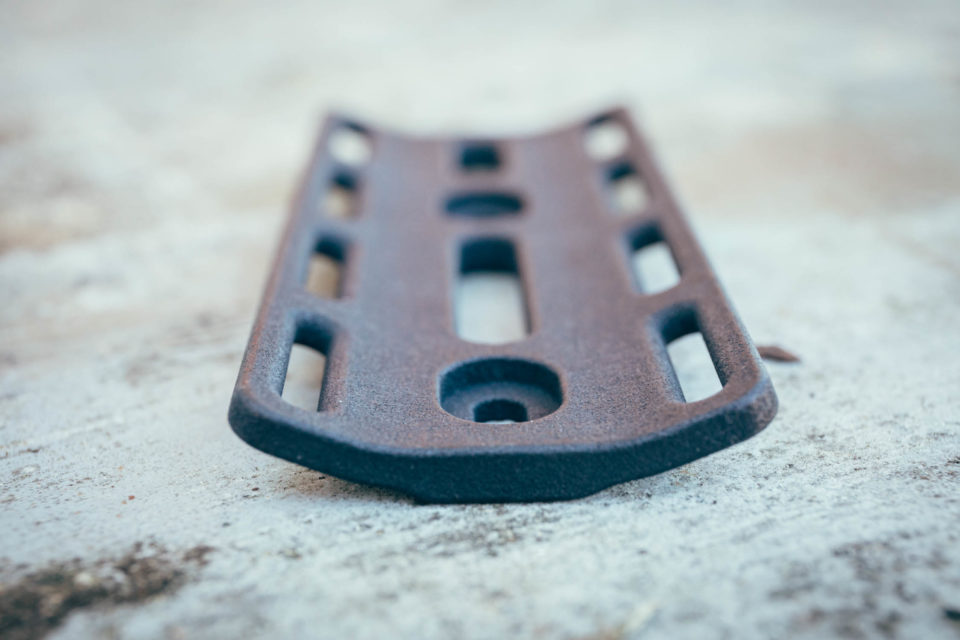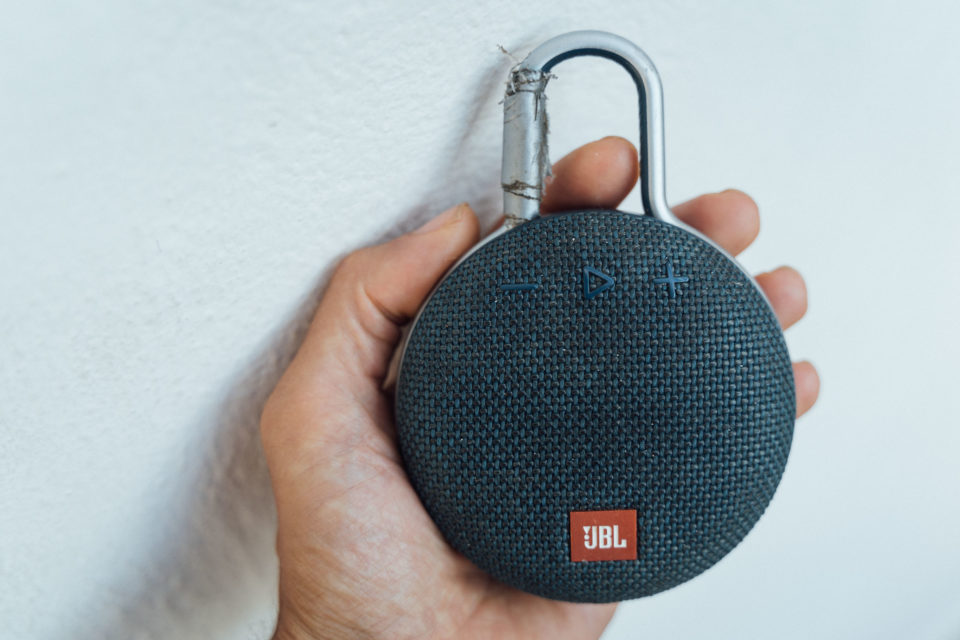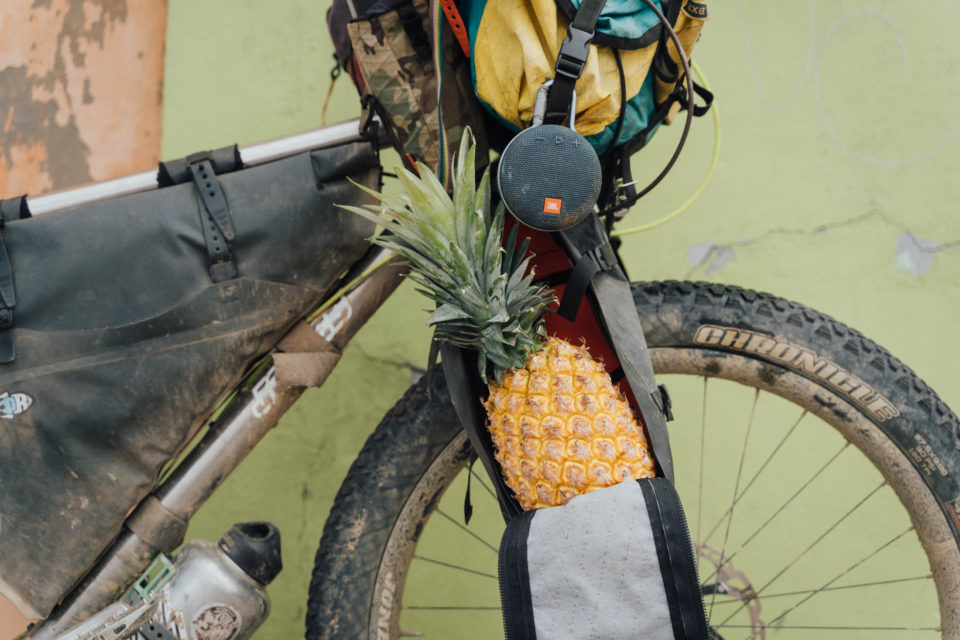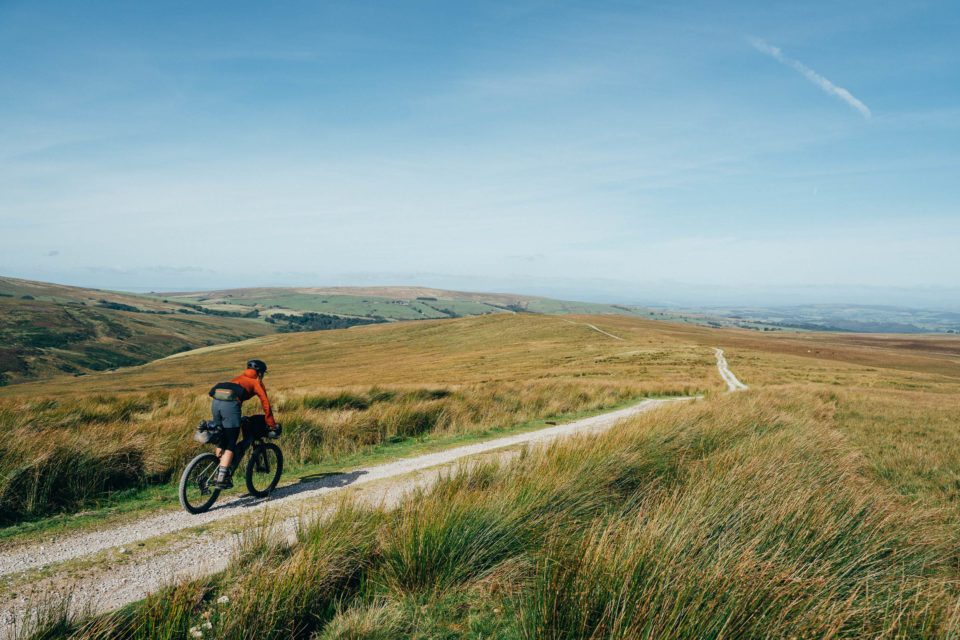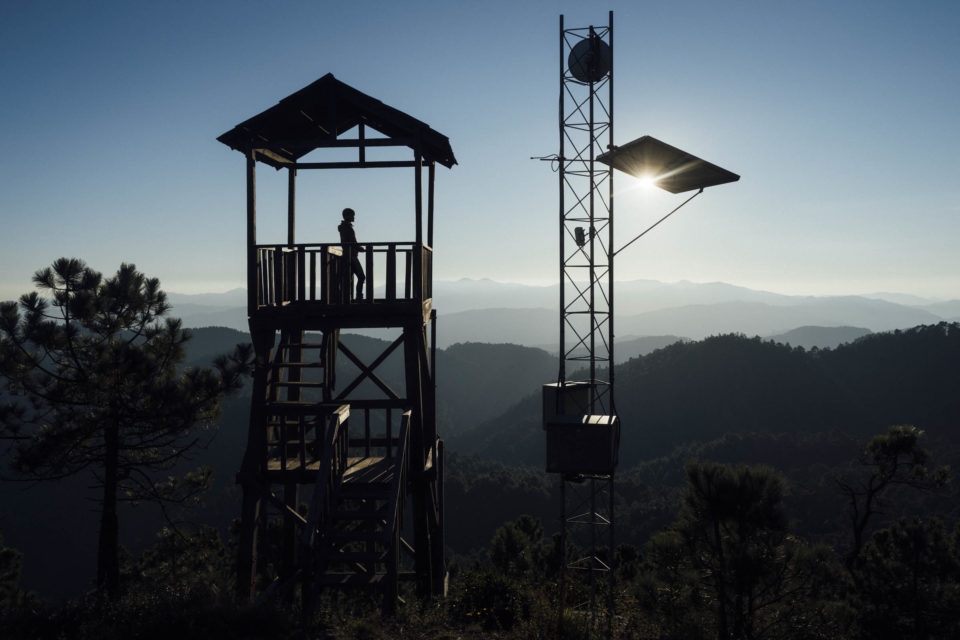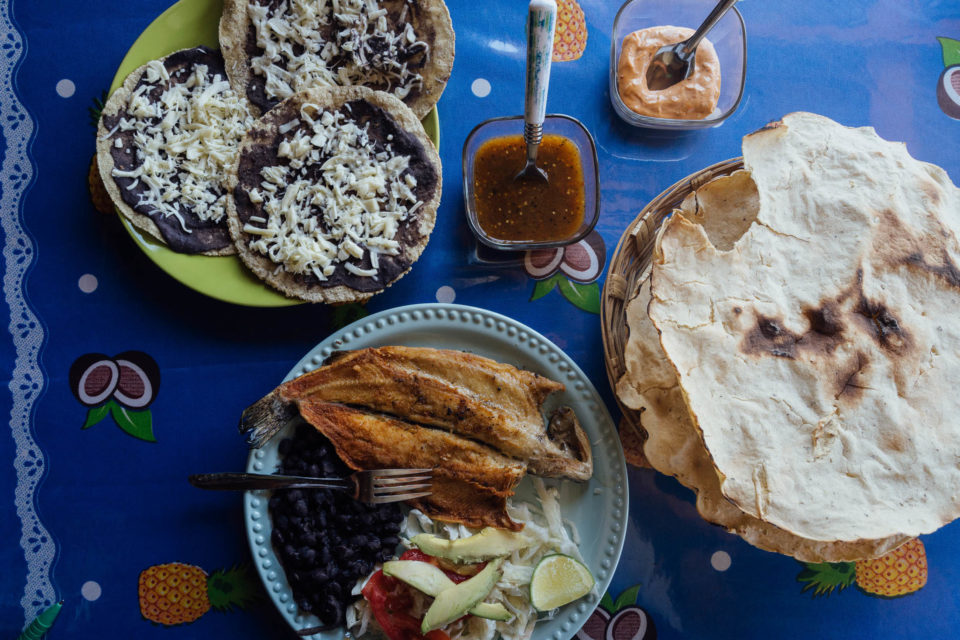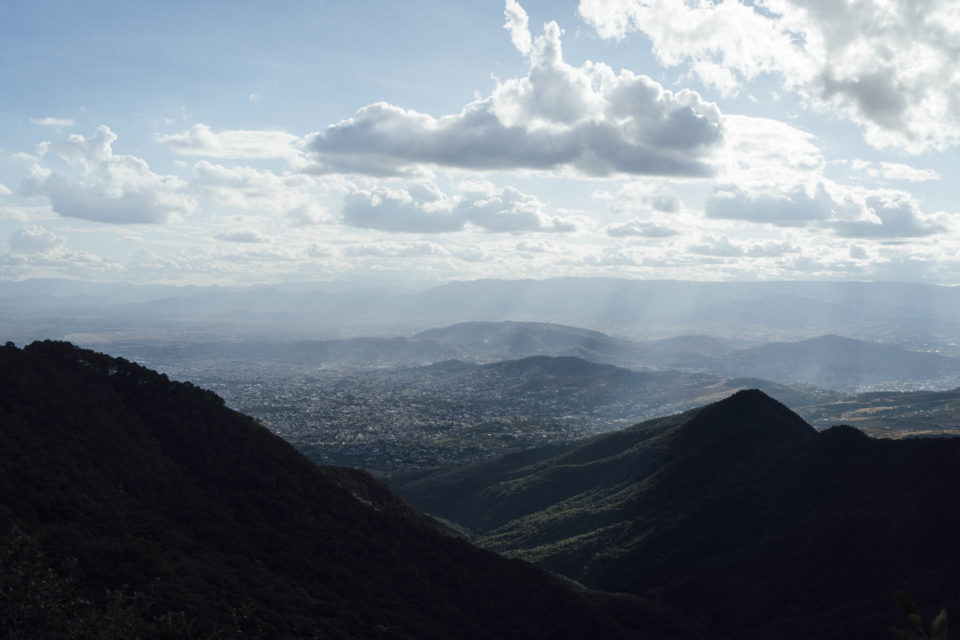Editor’s Dozen: Cass’s Favorite Gear of 2020
While this year hasn’t involved as much gear testing as normal, for obvious reasons, Cass still has a dozen favorite items and experiences to share from 2020. Read on to find his full list of gear picks here…
PUBLISHED Dec 17, 2020
To be honest, this year hasn’t been a big year for reviewing gear for me, simply because I haven’t been able to return to the US or Europe where I can try new stuff out. But that hasn’t stopped me riding, so what I’ve used, I’ve used a lot!
Not all the picks below are new for 2020 and a couple have even appeared elsewhere on the site. One is an old favourite and I’ve also I’ve popped in a more personal experience to round the list off.
Jones SWB Titanium
Made in Taiwan / $3,600+ at Jones
Due to COVID-19, I’ve ridden one bike all year – the Jones SWB Ti – so guess I’m lucky to have been ‘stuck’ with one I like so much! Because whilst the price for its frameset alone puts it firmly out of reach for many – including me – it sets the bar for my interpretation of a dream bike. I was originally due to send it back in April, on my return to the US. But several months later, I’m still waiting to be allowed back in… so I’m still riding it!
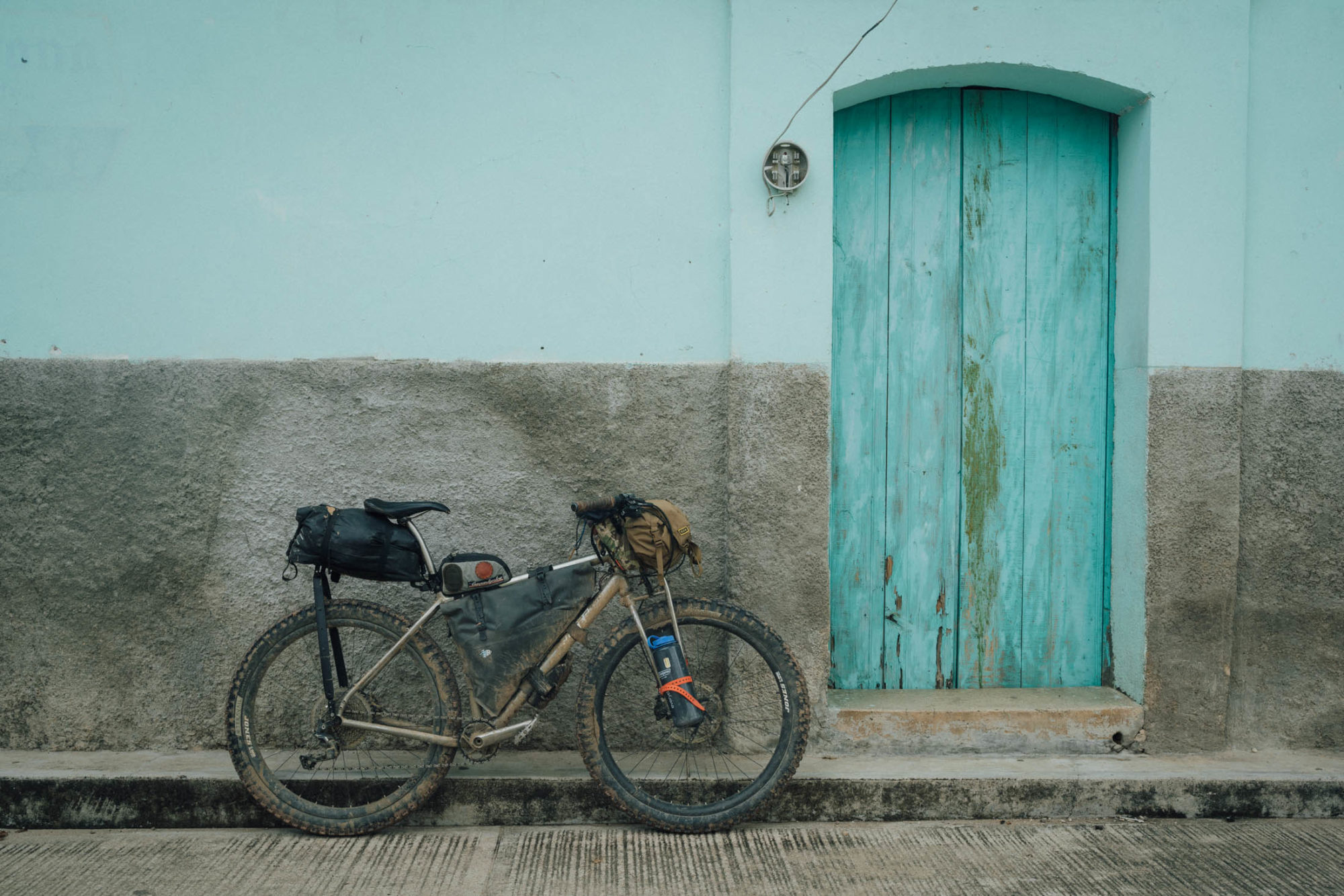
A period of lockdown aside, I’ve ridden the SWB most days, and it wouldn’t be an exaggeration to say that I come back smiling each and every time. For sure, it’s provided me with a welcome mental boost to weather these rocky months, which is about as much as I can ask for.
Still, I’d hate to give the impression that a titanium bike is the be-all and end-all for happiness! In fact, I’d much prefer to point you to the Chromoly, $1,375 version of the SWB because the reality is – as mentioned in my review – the latter isn’t just ‘good enough’, it’s a fantastic frameset too. In fact, it’s certainly the one I’d go for if it was my money – perhaps with a Ti fork if I was feeling flush – because ultimately, the SWB is more about a wonderfully well-rounded geometry than it is about a choice in frame material.
Don’t get me wrong though. I still feel there’s a place for hardtails with long-travel forks and I look forward to the time I can ride one again. But at this point in my riding life, I’m extrmely happy to be spending so much time aboard a very capable, low-maintenance, fully rigid machine that I can use for technical trail riding, dirt road jaunts, and comfortable, fast gravel day rides alike, with a change of tyres.
Surly Pugsley (RIP)
I’d also like to use this opportunity to say goodbye and thanks for all the Pugsleys! Years after riding Surly’s first fat bike on a six-month journey through Latin America, I finally penned an ode in January this year, after rebuilding it to explore the arroyos of New Mexico. And prior to that, I’d also written about ‘racing’ the Arrowhead 135 on its cousin.
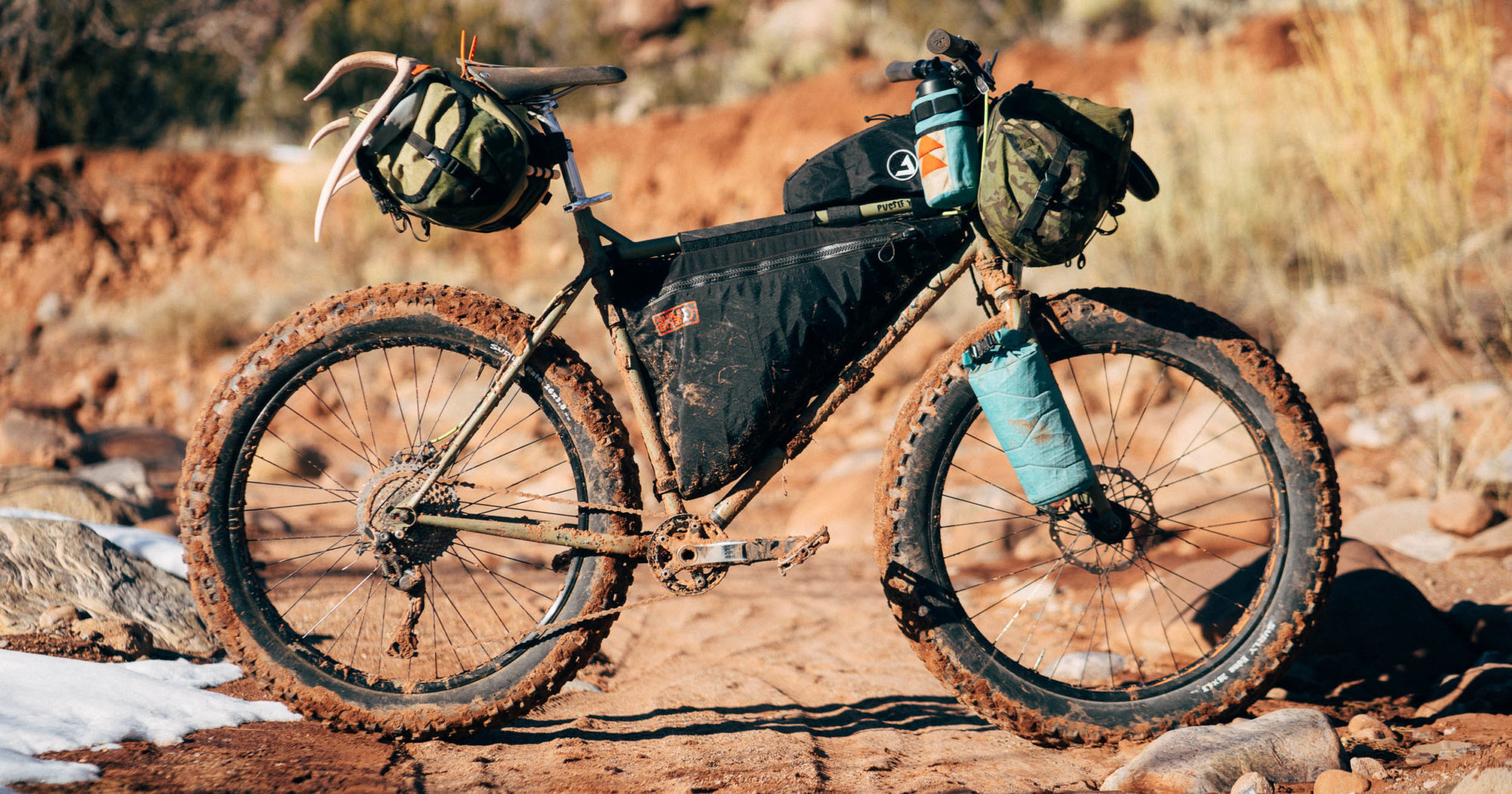
Sure, the bike has now been officially discontinued. But just because a bike is no longer made, it doesn’t mean it’s no longer worth riding! The sure-footed and field-repairable Pugsley remains a fantastic way to discover the wonders of winter fatbiking, arroyo exploring, and omni-terra touring. And whilst most of my riding these days doesn’t warrant a fat bike, when it comes to true, off-the-grid journeys, my Pugsley remains unmatched. Besides, all fat bikes are dream makers; take one for a ride and there’s simply no way you can stop yourself from plotting magical journeys along beaches, across deserts, and through snowscapes. With 15 years since its conception, the Pugsley has now been around for long enough that there will likely be second-hand examples circulating around the classifieds for years to come. In fact, a friend of mine just bought an ‘almost new’ Pugs for $650 and is thoroughly enjoying it. And earlier this year, I shared some trail with Julia Vallera. Her Pugsley was built up with plus tyres and served to show me how capable this bike can be in deep muddy conditions too.
With so many years since its launch, there are now a number of very capable, modern fat bikes with all the latest standards to choose from. But in my mind, I don’t think that anything can quite replace the quirky, iconic Pugsley.
Rockgeist Honeybox Feedbag
Made in USA / $105 (pair) at Rockgeist
This year, I had the chance to give Rockgeist’s Honeybox stem bag a whirl. The Jones SWB has a short reach, so I figured the Honeybox’s slim profile would decrease the chance of my knees rubbing against bag paraphernalia when riding out of the saddle.
Indeed, the bag’s slender shape proved to be perfect. It’s ideal for snacks but can handle a water bottle securely too, if space is less pressing. The bag is lightly padded, so I’ve also used it to stash my iPhone – and I expect it would work really well for a compact camera too. The adjustable elastic toggle is a really nice touch and build quality is excellent, as you’d hope for $50. I’ve teamed mine with Rockgeist’s clever Spacelink ($30) – which slots between the headset spacers and serves to decrease velcro clutter around the stem. All in all, the Honeybox works really well on a bike like the Jones. I expect it would be equally effective on drop bar bikes too, where short top tubes can also result in cockpit space being limited.
What Happened Stem Bag
TBD at What Happened
At the risk of sounding at odds with my previous choice, my next pick is one of What Happened’s larger Snackbags. I’ve had it since the end of last year and was initially drawn to this colourful stem bag because it’s made from waxed canvas offcuts and as a result, it’s completely individual! With the outdoor industry looking at ways to decrease its negative impact on the world, re-using and upcycling materials that are already in circulation – whether it’s offcuts or an old Thermarest – seems like a great avenue to explore. What Happened offers personalized and thoughtful gear that doesn’t come with the environmental impact often associated with new purchases.

Neža Peterca – who founded the business from her Slovenian home in 2020 – is up for all manner of projects and repairs, both large and small. I have a washbag that Neža made from a worn-out waterproof, so if you have anything specific in mind or a retired garment you’re attached too, get in touch. Of course, you can even go one step further and do it yourself; a regular contributor to the site, Neža has also shared a post on how to make your own stem bag.
Outershell Backpack
64 grams / Made in USA / $70 at Outer Shell
While I’m on the subject of gear made from upcycled materials, I also want to recommend Outer Shell’s Backpack, the perfect ‘overflow’ backpack for that bag of corn chips or a loaf of bread that won’t quite fit into your setup, without smooshing it down. This stuffable, 14L backpack replaces the foldable version that preceded it – which, whilst clever, proved too fiddly for most in practice. No complaints here. I’m happy to deploy the longstanding ‘stuff technique’ because ease of use is exactly what I’m looking for in such a bag. In fact, I’m a big fan of minimal, overflow backpacks as a whole, because they’re ideal for replacing a plastic bag when hitting a grocery store to resupply, especially when you buy more than you can technically fit on your bike. And who doesn’t do that? This one weighs just 61g and is made from upcycled sail fabric. I have a full review – along with thoughts on ‘overflow’ backpacks in general – in the pipeline. The price is $70.
Paul Quick Release Seat Post Clamp
Made in USA / $100+ at Paul
Here’s a component that has been something of an unexpected saviour for me over these last months. This year, I’ve been stranded without many of life’s ‘necessities’, like my beloved dropper post! I’d hoped to get hold of a $99 TransX dropper to see how well a budget model fared with regular use. COVID-19 delayed shipment, so instead, I went ‘old school’ and borrowed one of Paul Component’s California-made, Quick Release Seat Post Clamps for my day-to-day trail riding – even if, somewhat ironically, it’s almost as expensive as the budget dropper, given its eyebrow-raising $73 price tag.
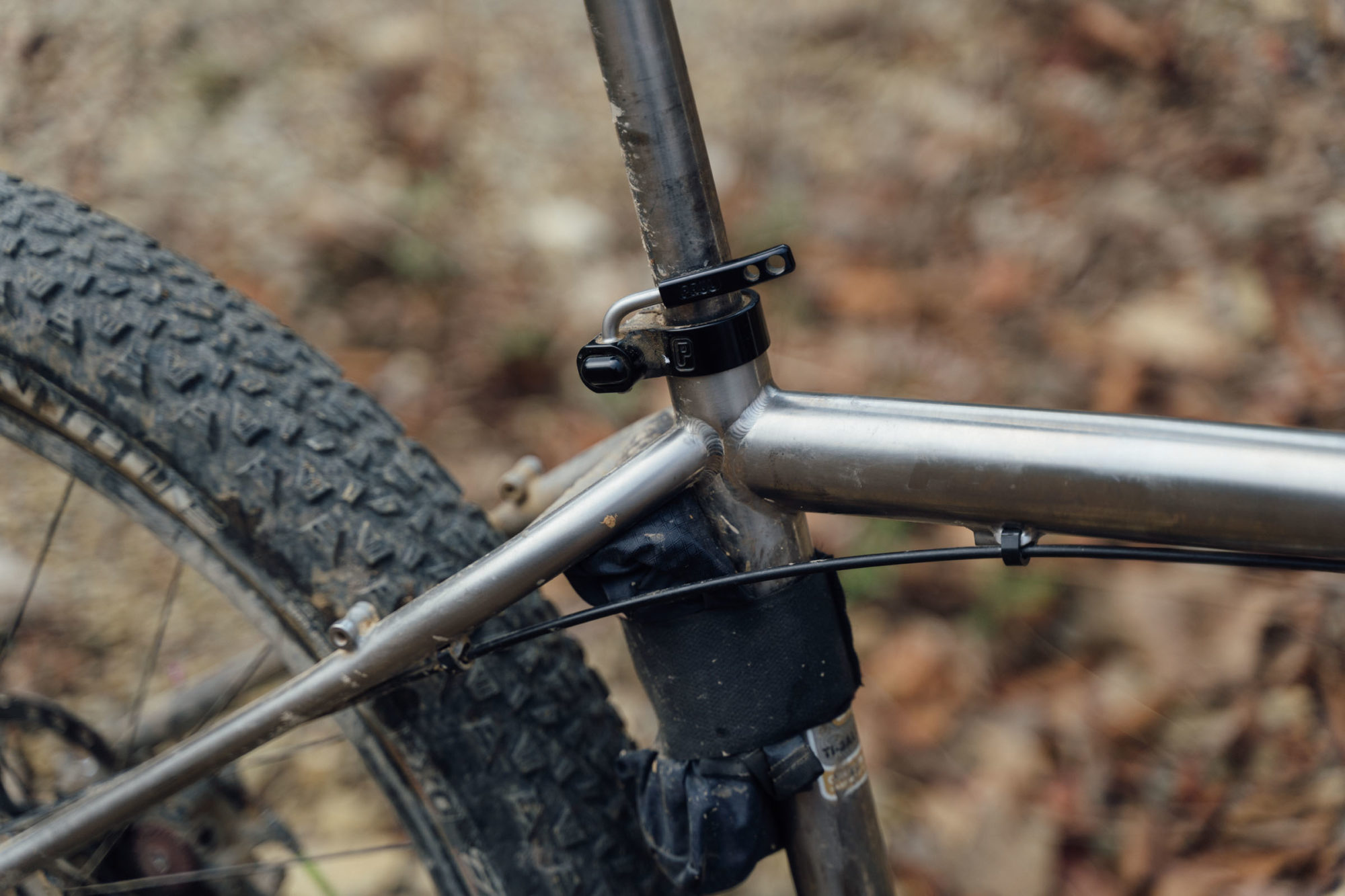
Almost all quick releases I’ve tried in the past have resulted in seatpost slip, which is a pet peeve of mine when touring. As boutique-looking as this Paul iteration may be, it’s reassuring to know that it does a stellar job doing what it’s supposed to do. The handle is comfortable to release and engage, and when its bolt is greased and adjusted to the correct tightness, it’s held my post in place tenaciously.
For the most part, I’ve been riding XC trails where a dropper, whilst extremely welcome, hasn’t been completely needed, so I’ve used this clamp to bail me out when descents get scarily steep on Oaxaca’s enduro trails. I do, however, feel the need to point out that Hope offers a UK-made CNC machine seat post clamp too, for less than half the price – but I’ve not had the chance to try one.
Teravail 29 x 2.6″ Combo
Made in Taiwan / $70+ at Jenson
Most bikepackers favour a fast-rolling tread to their tyres, which makes sense for many of the routes on this site. But when I’m limited to just one bike and I also have fantastic, techy trails on my front door, I prefer more aggressive rubber at the front end and to resign myself to some heavy lifting when I’m on pavement. With that in mind, I’m a big fan of the hardwearing Teravail Kennebec/Cumberland combo I tested a few months ago, and, now that I’ve actually spent some time on it, the 29 x 2.6″ wheel format in general. I still see real value in 3″ tyres, especially for long routes like the Baja Divide, rigid mountain bikes, or anyone who spends their time exploring the desert tracks and arroyos of New Mexico, for instance. But with the future of this tyre width uncertain due to availability and an ever-morphing bike industry, I’m pleased that 29 x 2.6″ have proved to be such an able replacement – and in my opinion, superior in some situations. Note that I’d definitely consider Schwalbe’s 2.6″ Nobby Nics as a slightly slimmer contender too, that don’t come with the weight penalty of the Teravails.
DeWidget Strap Deck Medium
Made in UK / Details
I recently enthused about Tailfin’s excellent new Cargo Cage. However, I also want to give a shout out to drjOn bagworks’ DeWidget Strap Decks, a series of 3D printed ‘nano’ cages that are born from obsessive shed tinkering.
I should point out that generally, I’m not a fan of fitting unwieldy cargo cages to the underside of my bike. They can make lofting it awkward (especially on protracted hike-a-bikes), and are prone to snagging on logs and rocks when I’m trail riding. The cargo tends to gather a lot of muck, too.
However… the £20, 25g DeWidget is so small that it’s the best design I’ve come across in this regard. I leave it ’empty’ most of the time and use it when space is tight elsewhere – perhaps for an extra bottle of water or some additional fuel for my alcohol stove. I always pack a spare Voile strap or two anyway, so it’s easily pressed into service when needed. In fact, this cage is so tiny, slim, and light that sometimes I pack it away amongst my belongings and fit it when needed.
Whilst the smallest size (the Medium) isn’t ultimately as stable as the bigger Tailfin, it still does a perfectly good job at keeping a 1.9L Klean Kanteen from clattering around below the downtube – though lighter cargo is better. Or, you can size up to an L, which is subtly larger and perhaps more versatile, as it can also be mounted to a handlebar. I don’t doubt that more minimalist, bikepacking delights will appear from drjOn’s shed in 2021…
JBL Clip 3 Speaker
210 grams / Made in China / $45 at AMZN
Some people like to bikepack in relative silence and let the sounds of nature be their soundtrack. But music has always been a big part of my life and I also love to create playlists for my bikepacking trips (don’t worry, only when I’m in my own company!).
This JBL Clip 3 isn’t the very lightest on the market (200g), but I consider the sound quality to be excellent for its size and weight. Most importantly, the battery life is really good too, at around 10 hours. I bought mine earlier in the year and have used it solidly since then. Unfortunately, the part that I worried would be a weak point – the actual clip – soon broke. I’m sure REI would have replaced it but the logistics of dealing with the warranty during COVID-19 meant that I simply taped it in place, and now use a Voile strap to attach it or hang it off a side pocket – as seen with this BXB Goldback Small, which I’ve also been running all year. Too bad that for $60, the part that gives the speaker its name failed, but I have several friends with a Clip 3 and none has experienced the same issue yet.

Either way, it’s survived rain, sand, and all kinds of knocks and vibrations, and continues to play on, rattle-free. It’s also great for podcasts in the evening and if you’re feeling cinematic, Bluetoothing to your laptop for movie night. I see that there is now a JBL Clip 4, but it doesn’t look like the clip mechanism is particularly different.
Patagonia Houdini Windproof
97 grams (M) / $109 at Patagonia
I picked up a Houdini at the beginning of the year after it was recommended to me by numerous friends – it’s an oldie but a goodie. I didn’t manage to track one down in the burned orange colour that first caught my eye – see below – but I absolutely love it nonetheless. It packs down into a small and lightweight ball, nestling cutely in its zippered chest pocket, which in turn fits easily into a hip bag or stem bag. At a little over a 100g, there’s rarely a reason for me to be without it.

I overheat easily when I ride, so the Houdini – worn closed or flapping like a cape – is the perfect layer for me. It cuts out chilling wind without trapping in too much heat, I like the slim fit, and in a pinch, I’ve found it perfectly capable of protecting me in a rainshower too.
Say what you want about Patagonia’s pricing, but their eco-credentials lead the outdoor industry – the Houdini is made from 100% recycled nylon, the company’s repair service is lauded, and customer care is also excellent. The Houdini cost $99 and given this context, I consider it money very well spent.
Hyperlite Mountain Gear Face Mask
Made in USA / $20 at HMG
Hyperlite Mountain Gear’s Face Mask comes in a pack of 5 for $20. It’s the most comfortable mask I’ve tried so far, one that I can even wear when I’m riding. Of course, it’s hard to be sure which masks are the most effective amongst those without a filter. But ultimately, it appears to do a good job at keeping the moisture from my breath from escaping, teamed with a cut that’s comfortable and doesn’t slip down when I’m talking – the knock-on effect being that I don’t fiddle with it and adjust it continually. Talking of which, whilst the elastic loops are one size only, they somehow they never dig into my ears. According to Hyperlite: “Our mask is constructed with an interlock micro polyester with a skin-friendly durable water repellent coating. Interlock micro-polyester features the tightest available weave, the smoothest surface, and a great feel next to the skin.”
Note that this mask doesn’t include a slot for a replaceable filter, so when I’m likely to be in closer confines for longer periods of time, I defer to my Outdoor Research mask. It’s less comfortable in warm climates and I don’t find it works for riding in, but it offers better face coverage and has a slot for a filter too, which keeps 95% of viruses and bacterias at bay.
Getting to know my backyard
For both COVID-19 and geopolitical reasons, I haven’t been able to return to the US or Europe this year. Instead, happenstance has landed me in Oaxaca, Mexico, for a good chunk of 2020. Being away from my family and friends for so long has been incredibly hard, but there has been a silver lining. I’ve had the opportunity to become familiar with my new backyard in a way I never expected. And what a backyard it is!
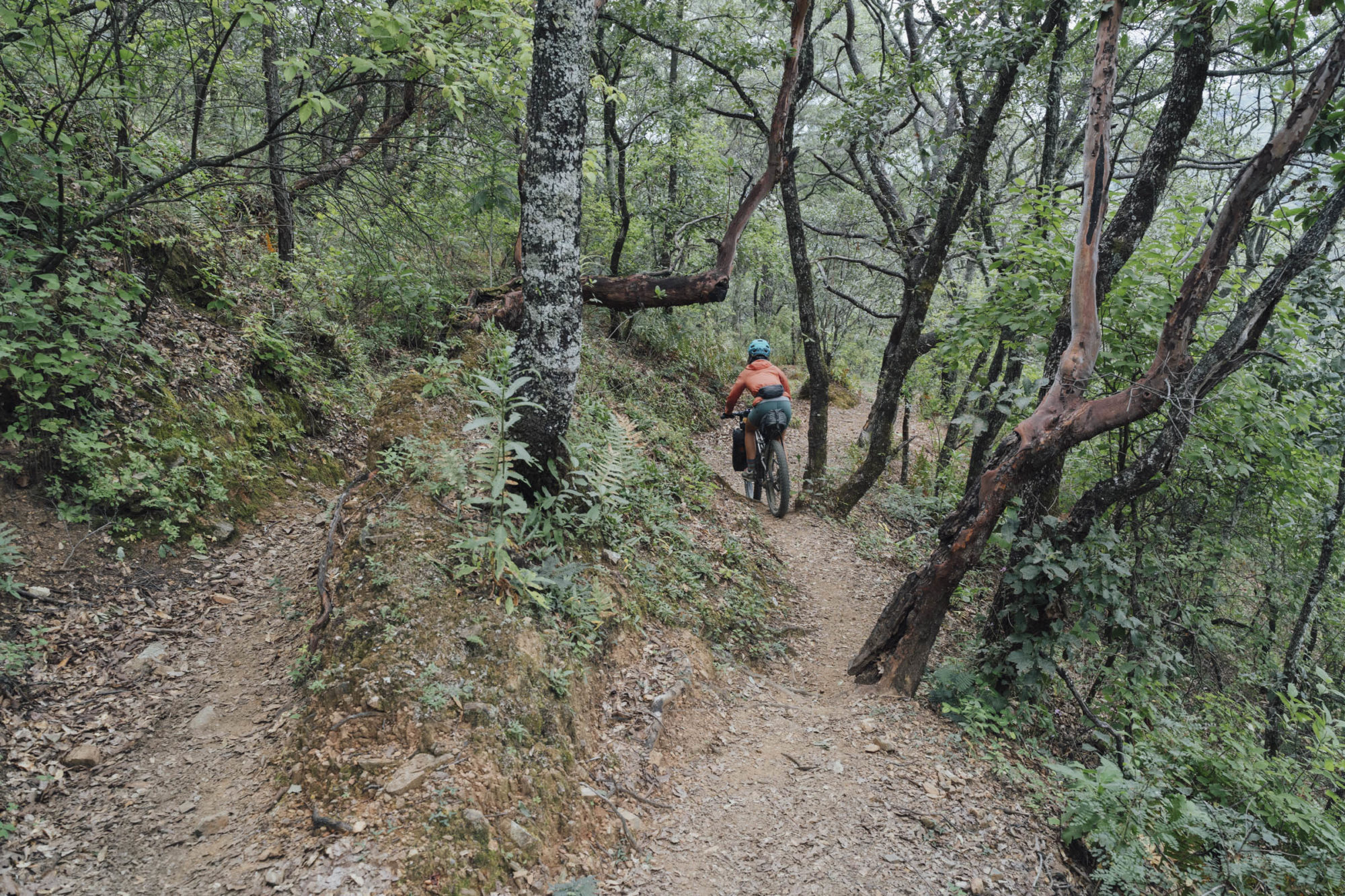
I spent hours putting together routes whilst in lockdown, and thankfully, was able to ride some of them several months later. I’ve also gleaned all kinds of local insights from Oaxacan riders, to the extent that I now have dozens of outings into the countryside at my fingertips. Many of these serve as perfect overnighters too – and all of them can be enjoyed by riding straight out of my front door, without the need for a vehicle. I’ve foraged there and celebrated birthdays up in the high country. In short, I’m thrilled to have stumbled upon this beautiful state and to have been welcomed in during such difficult times. I look forward to sharing more routes from Mexico in the future and helping to grow Oaxaca’s bikepacking community.
More 2020 Editor’s Dozens? Check out Neil’s video here. Be sure to dig into past Editor’s Dozen lists at the tag #editorsdozen, and stay tuned for more.
Please keep the conversation civil, constructive, and inclusive, or your comment will be removed.






